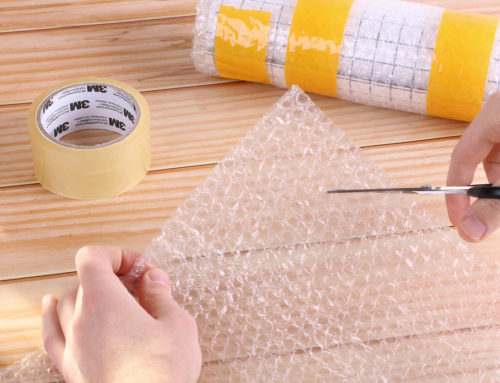
Lugging heavy items up and down stairs adds an extra challenge to a move. Not only do you have to get your belongings from one floor to the next, but you have to do so without damaging your home’s walls, staircase banisters, and the item you’re moving. Plus, you want to do it safely, so no one gets hurt. Luckily, stairs don’t have to require a Herculean effort. With the right equipment and a few friends, the average person can easily manage a move with a staircase. What follows are our tips on how to move when you have stairs.
Start by Planning Ahead
Before moving day, take stock of the items that may present a challenge. First, measure their height, width, and depth. You may want to record these measurements, so you have them on hand for the move. Next, measure the width of the stairs, the space around corners, and the distance to the ceiling. Jot these measurements down as well.
Then, formulate a plan for each item. You’ll want to decide what the best position to carry that is. Does it need to be carried at a particular angle as you go up or down the stairs? Will you need a different position or angle to avoid hitting the walls, railings or ceiling? Also, consider whether specific equipment, like a hand truck, will make the task easier. Finally, you’ll want to determine how many people you need to help move that piece.
If you’ve never moved heavy or bulky items before, invest the time to learn how to lift correctly to prevent injury and reduce the risk of damaging your belongings.
Get the Right Equipment
The right equipment makes moving up and down stairs much more effortless. If you rent a moving truck, a hand truck or other equipment may come with it free of charge. If not, you’ll want to consider renting one or more of these options before you start moving.
- Hand truck/utility dolly: Although often referred to simply as a dolly, these L-shaped, two-wheeled carts have a flat platform that can be wedged under items and tilted back for easy transport. (A furniture dolly isn’t upright; flat and has four wheels.) Be sure you are renting a hand truck—even if it is called a dolly—because you won’t be able to maneuver or control an actual dolly on stairs.
- Stair climbing dolly: These hand trucks are designed for stairs and can be manual or battery-operated. Most have three wheels arranged in a triangular fashion. Two wheels rest on the step while the third rotates up to the next step. While these devices make it easy for one person to transport a heavy item up and downstairs, they are pricey.
- Moving straps: These harnesses allow you to lift heavier objects than you usually would be able to. They work by attaching to a belt that loops under the item you are moving. You’ll need someone with moving straps on the other end of the thing to lift it and position it. The stronger person should be on the bottom when using moving straps since gravity shifts the weight down on stairs.
Use what you have
If you are in a pinch and don’t have time to rent or buy special equipment, you can improvise with the following items:
- A sturdy blanket: As long as your thing isn’t too heavy, you can use a blanket to move it down the stairs. Slip the blanket under the item, and using the excess fabric, make “handles.” Lift the item with a friend on the other end, and slowly make your way up or down the stairs. Again, you’ll want the stronger person behind the item since gravity will transfer most of the weight towards the person lower on the stairs.
- Essential tools: Depending on the item, you may be able to break it down into more manageable pieces with a screwdriver, ratchet set, and other standard tools. You can remove legs or back from chairs, mirrors from dressers, or doors from heavy appliances.
Protect your stairs
Wood stairs can get scuffed and carpeted stairs stained during a move unless you protect them. The type of protection needed depends on whether you have wooden or carpeted stairs. Since wooden stairs have no padding, an item dropped on them can easily scratch or dent the wood. You’ll want protection with padding. On the other hand, since the carpet has padding, look for a cover that will adhere to the carpet fibers and not slip. Here are some options:
- Stair runners: Made from neoprene or carpet to specifically protect your wood stairs during a move, these runners minimize scratches and dents in the wood. A similar version for carpeted stairs adheres to carpet fibers. Quality runners have an adhesive backing and anti-slip surfaces. If yours don’t, tape them in place with painter’s tape.
- Non-slip drop cloths: Non-slip canvas and plastic drop cloths don’t provide padding for wooden stairs. However, they conform to their shape, making it easier to keep dirt and dust from causing damage. You’ll need to secure these to the stairs with painter’s tape.
- Rosin paper: Builders and contractors use rosin paper to protect surfaces during construction. It works well to protect stairs from dirt. Unfortunately, it tears and does little to protect wood against dents. It’s still a reasonable option if you secure it with painter’s tape.
- Old blankets or rugs: Thick blankets and rugs offer wood stairs protection against scratches, dents, and scuffs and protect against dirt. Again, you’ll have to secure them in place with painter’s tape, but you’ll also want to watch that they don’t get bunched and create a tripping hazard. If you don’t have old blankets or rugs, moving blankets can work, too.
Protect your home
To minimize damage to your home’s banisters and walls during the move, take these extra steps.
- Wrap moving blankets, old blankets, or thick towels around the banisters to prevent the edges and corners of significant pieces from causing damage. Secure with painter’s tape.
- Cover staircase walls with moving blankets or old bedspreads held in place with painter’s tape. If you don’t have thick coverings, bedsheets will prevent scuffs.
- Remove doors, if necessary, for added maneuverability and to protect the door from damage.
Move safely
The actual process of moving down the stairs depends on what equipment, if any, you use. Regardless, these tips will help reduce damage and the chance of injury.
- Know how to lift. Whether you’re raising a box or sofa, bend your knees, and lift with your legs. Make sure you have a good grip and stand slowly. If you need help, get it.
- Position for weight. As you move up or downstairs, the weight of whatever item you’re carrying will be greater at the lower angle. Be sure the most vital person is behind the object to manage the brunt of the weight, and the weaker person is in front, guiding it.
- Go slowly. Take it slow. If you move too fast or carelessly, the item can fall out of your hands to the bottom of the staircase or into a wall. Worst case scenario, it can injure someone in the process, too.
- Reposition if necessary. As you move slowly, you can usually ease the item down for a momentary break or adjust your grip. If you are navigating a staircase landing, you can also reposition the object, allowing you to make the turn without damaging the walls.
In Doubt? Hire Professionals!
If you live on an upper floor or have a multi-story home, it’s often worth the extra money to have professionals do the work for you. Call Belleair Storage for a list of recommended professional movers.


